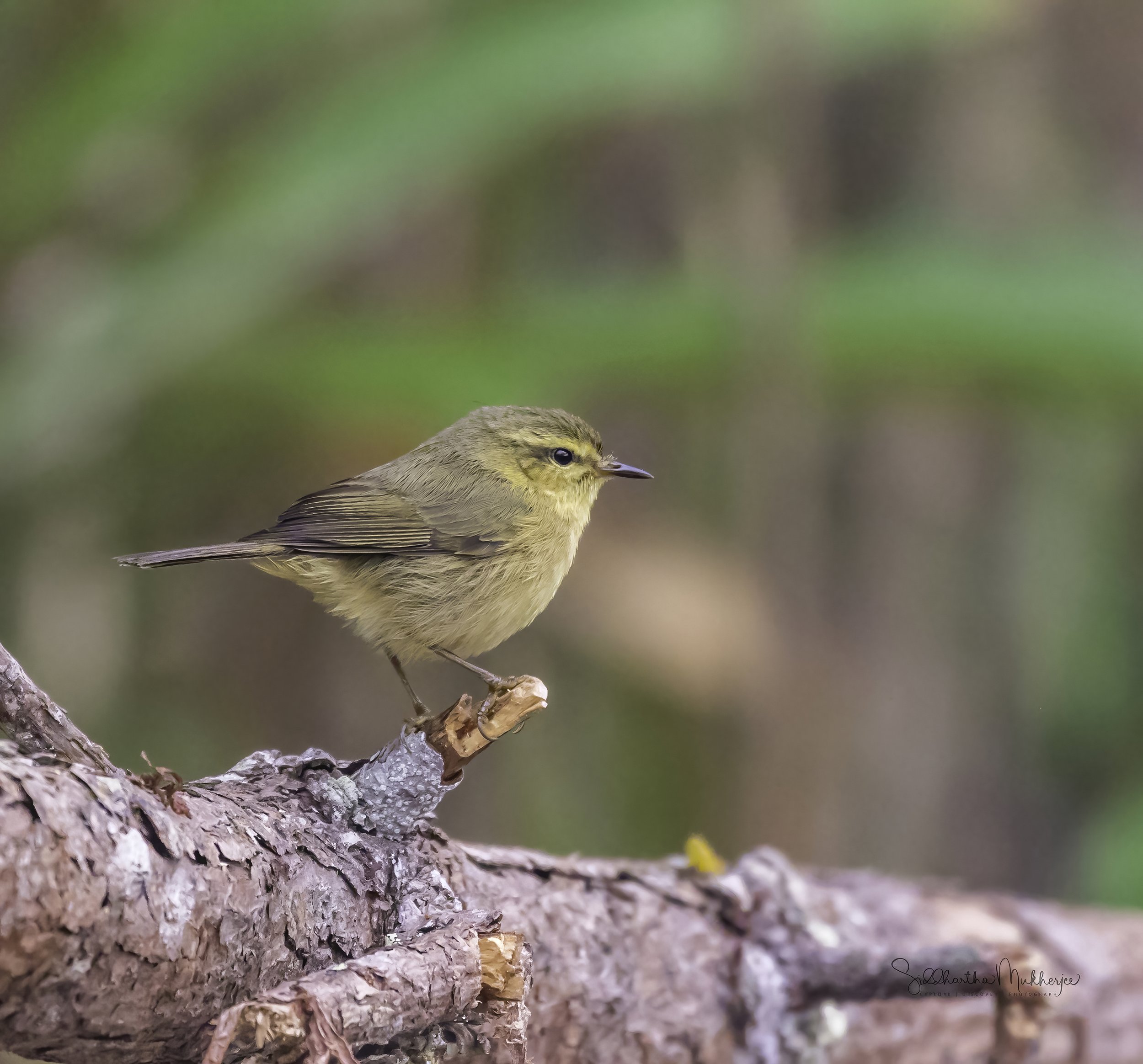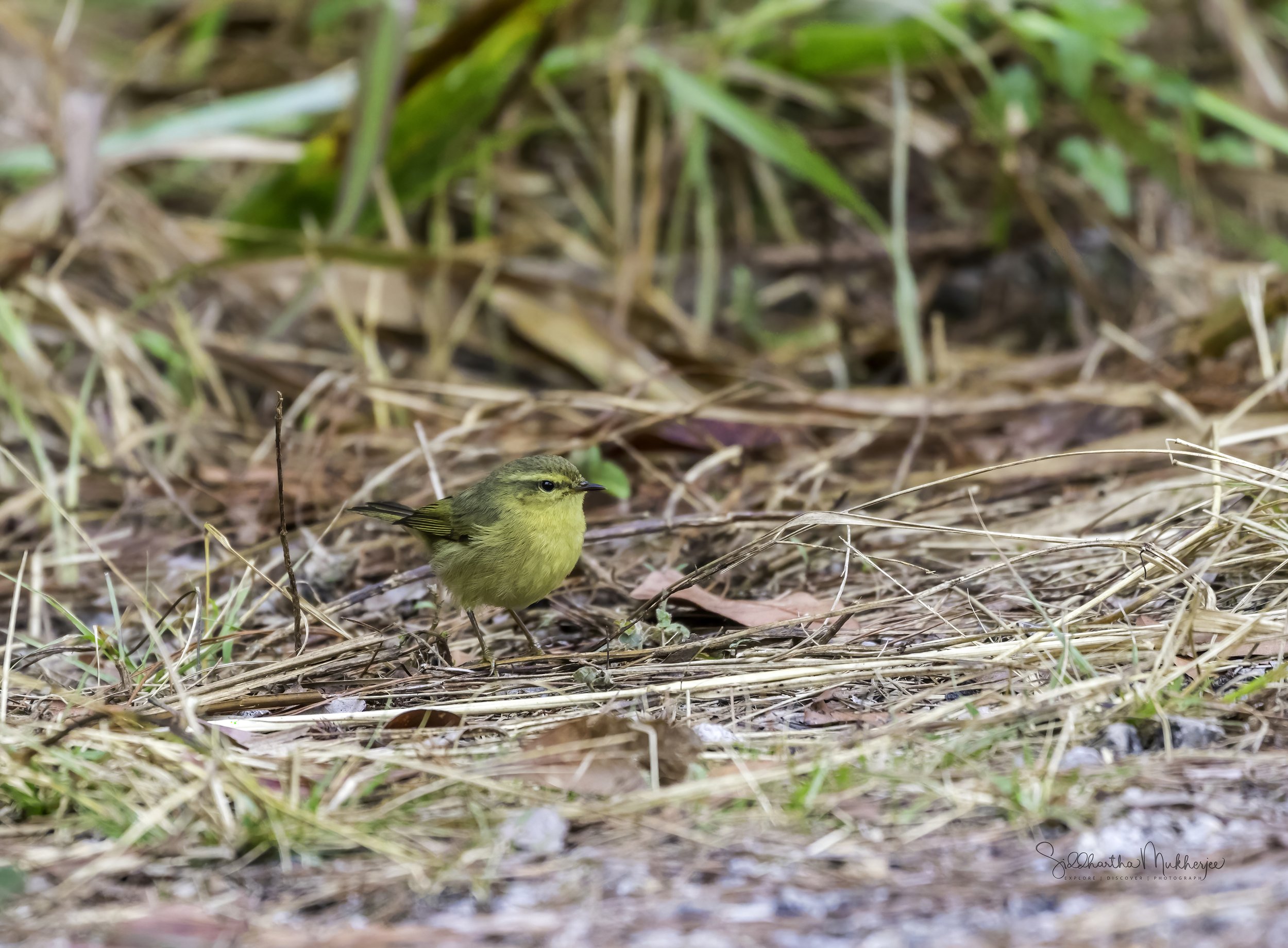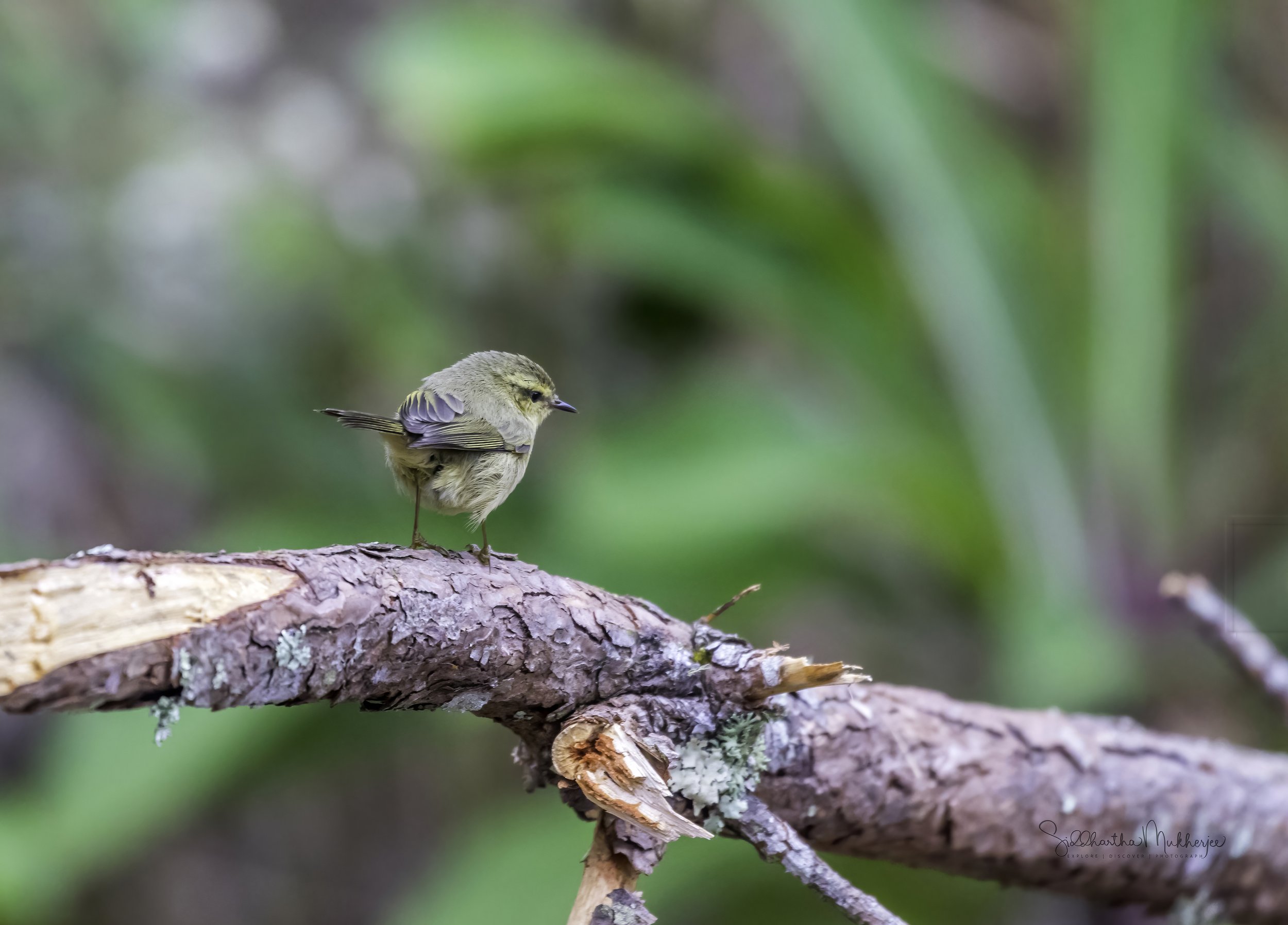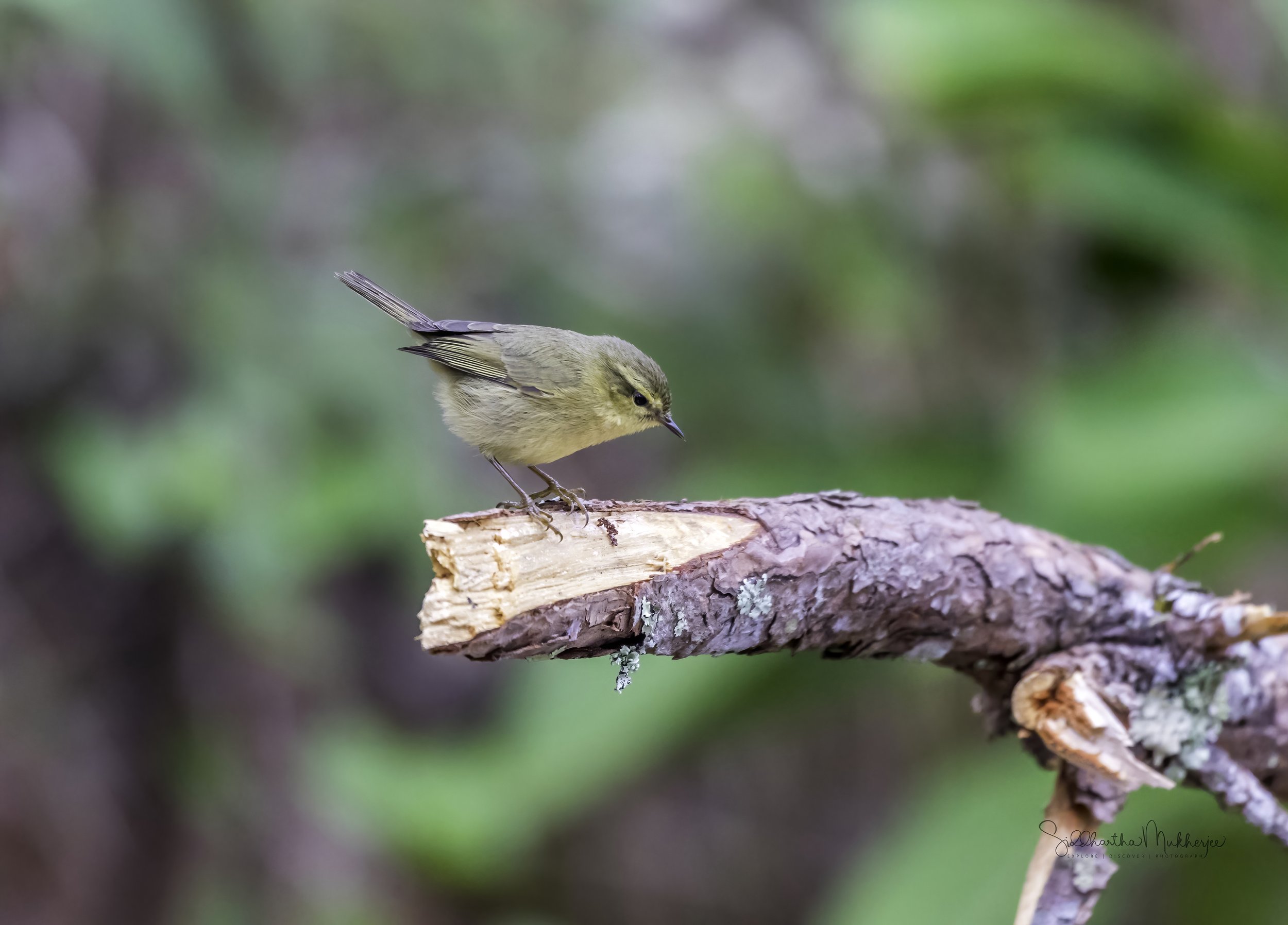Tickell’s Leaf Warbler
Phylloscopus affinis
Chiang Mai, Thailand
We return to north Thailand in the beautiful Chiang Mai district searching for the Tickell’s Leaf Warbler - a brown-and-yellow leaf warbler without a wingbar. It breeds in high-altitude areas, in open areas with low vegetation, wintering at lower elevations, including throughout the Indian Subcontinent south of the Himalayas, where it is most abundant in shrubbery in the northeast Indian plains and in the high Western Ghats. It has yellow cheeks and underparts, and shows little contrast between the eyebrow and the throat. the Tickell’s spends less time on or near the ground than the Sulphur-bellied and tends to flock, and often participates in mixed-species foraging flocks which is how I spotted the bird.
Leaf warblers are small insectivorous passerine birds belonging to the genus Phylloscopus. They were formerly included in the Old World warbler family but are now considered to belong to the family Phylloscopidae, introduced in 2006. The family originally included the genus Seicercus, but all species have been moved to Phylloscopus in the most recent classification. Leaf warblers are active, constantly moving, often flicking their wings as they glean the foliage for insects along the branches of trees and bushes. They forage at various levels within forests, from the top canopy to the understorey. Most of the species are markedly territorial both in their summer and winter quarters. Most are greenish or brownish above and off-white or yellowish below. Compared to some other "warblers", their songs are very simple. Species breeding in temperate regions are usually strongly migratory.
But first about where I first saw this lovely little warbler - the spectacular mountains of Northern Thailand. The Dois of northern Thailand have been very kind to me from a birding perspective. There are so many I have already talked about and so many still remaining. I have written an overview here on the Birds of the Dois and have now started to break them up into individuals like the Gray-backed Shrike, Long-tailed Shrike, Spectacled Barwing, Siberian Rubythroat, the stunning Mrs. Gould’s Sunbird and the numerous other birds I have seen here.
About 685 kilometers to the north of Bangkok lies the former seat of the ancient Lanna Kingdom and is considered one of the most scenic provinces in the country given its mountain ranges, valleys, flora and fauna. A land of misty mountains and colourful hill tribes, a playground for seasoned travellers, and a delight for adventurers. Despite its relatively small size and blissful calm, Chiang Mai truly has it all, a city that is still firmly Thai in its atmosphere and attitude. It is the second-largest changwat (province) of Thailand. Bordered by Chiang Rai to the northeast, Lampang and Lamphun to the south, Tak to the southwest, Mae Hong Son to the west and the Shan State of Myanmar to the north. Located in a verdant valley on the banks of the Ping River, Chiang Mai was founded in 1296 as the capital of the ancient Lanna Kingdom. Today it is a place where past and the present seamlessly merge with modern buildings standing side by side with venerable temples. Of all the places I have visited in Thailand, Chiang Mai with its forests and mountains and the historic city of Ayutthaya are by far my favourites.
The word Chiang itself is from North Thai, or Lanna, meaning town or city and Mai means new making Chiang Mai the New City as it was founded later than Chiang Rai, the earlier capital of King Meng Rai. The districts in the province are called amphoe, and sub-districts are called tambon. Another twist is the use of Nakhon (or Nakorn or Nakhorn), derived from the Sanskrit word Nagara, also means city, though strictly speaking it refers to a capital city such as Nakorn Sri Ayutthaya (more on Ayutthaya later). Indeed to emphasise its former status you may sometimes see Chiang Mai referred to as Nakhon Ping. Other common names of geographical features include mae (river) and doi which is north Thai for mountain - for example Doi Inthanon and Mae Ping.
The four Dois we spent our time on were Doi Inthanon, Doi Ang Khang, Doi Luang and Doi SanJu.
Doi Ankhang is a mountain belonging to the Himalayan foot hill range, located at the Myanmar (Burmese) border. The highest point is 1,928 metres. Although chiefly deforested, this is still one of Northern Thailand’s most prominent birdwatching areas, due to more and rarer bird species being in residence, as well as being a popular resting point for numerous migratory birds. Examples of rare and beautiful birds inhabiting this area include the Mountain Bamboo Partridge, Spot-breasted Parrotbill and the Red-faced Liocichla. It is not so uncommon to spot the Red-tailed Laughing Thrush here. Around The Royal Agricultural Project Station you can find Brown, Burmese and Long-tailed Shrike and also Fire-capped Tits and Silver-eared Mesia, White – tailed Robin & Maroon Oriole.
We didn’t have the good fortune to see all the species on all the mountains, that would have been impossible, but we did rack up quite a number of species - about 95 of them.
A B&W rendition of a path on Doi Ang Khang well before sunrise with fog enveloping and creating an atmosphere of mystery and expectation.
Read about the other birds from these beautiful mountains. These are only a few of the huge number I have spotted and recorded there.
With that said, meet this lovely little warbler from the mountains of Chiang Mai.
‡‡‡‡‡
Tickell’s Leaf Warbler
Tickell's leaf warbler (Phylloscopus affinis) is a leaf warbler found in Asia in the countries of Bangladesh, Bhutan, China, India, Myanmar, Nepal, Pakistan and Thailand. The species has a yellowish underside and supercillium. Like other leaf warblers it feeds mostly on insects by gleaning and short sallies. An active bird, it prefers the canopy and low shrubbery and can be difficult to track as it moves actively from branch to branch, acrobatically exploring the underside of leaves and twigs. The clear yellowish undersides and lack of a wing bar can be used to tell it apart from similar species. It has slim dark legs with largely pale lower mandible and grayish wing panel.
Tickell's leaf warbler was formally described in 1833 by the English ornithologist Samuel Tickell. He coined the binomial name Motacilla offinis where offinis is an error for affinis. Tickell's leaf warbler is now one of around 80 species placed in the genus Phylloscopus that was introduced by the German zoologist Friedrich Boie in 1826. The genus name combines the Ancient Greek phullon meaning "leaf" and skopos meaning "seeker" (from skopeo, "to watch"). The specific epithet affinis is from Latin meaning "related" or "allied".
Three subspecies are recognised:
P. a. affinis (Tickell, 1833) – east Himalayas from Nepal to southeast Tibet
P. a. perflavus Martens, J, Sun & Päckert, 2008 – west Himalayas from Pakistan to north India
P. a. occisinensis Martens, J, Sun & Päckert, 2008 – west-central China
The subspecies P. a. occisinensis was formerly treated as a separate species, the Alpine leaf warbler. It is now lumped with the Tickell's leaf warbler based on the results of a 2019 study that compared nuclear genomic data for the two taxa.
Tickell's Leaf Warbler - Range & Distribution
The Leaf Warbler species are of various sizes, often green-plumaged above and yellow below, or more subdued with greyish-green to greyish-brown colours, varying little or not at all with the seasons. The tails are not very long and contain 12 feathers (unlike the similar Abroscopus species, which have 10 tail feathers). Many species are more easily identified by their distinctive songs than their dull plumage. These are very small passerines with adult body masses that can vary from 3.5 to 17 g and in some cases, such as the Chinese leaf warbler, are among the lightest passerines anywhere. Several of the larger species are similar in size including the large-billed leaf warbler, Radde's warbler and the pale-legged leaf warbler. Total length can vary from 9 to 14.5 cm.
Leaf Warblers have an extremely large range, and therefore do not approach the thresholds for Vulnerable under the range size criterion (Extent of Occurrence <20,000 km2 combined with a declining or fluctuating range size, habitat extent/quality, or population size and a small number of locations or severe fragmentation). The population trend appears to be stable, and hence the species does not approach the thresholds for Vulnerable under the population trend criterion (>30% decline over ten years or three generations). The population size has not been quantified, but it is not believed to approach the thresholds for Vulnerable under the population size criterion (<10,000 mature individuals with a continuing decline estimated to be >10% in ten years or three generations, or with a specified population structure). For these reasons the species is evaluated as Least Concern.
It was a very pleasant morning with a nice breeze and beautiful diffused light. The conditions were perfect for photography and while we were photographing the Ultramarine Flycatcher, I noticed a small warbler foraging in a mimosa tree in the background. I took a few shots of the warbler and checked the photos and was pleasantly surprised to see that it was a Tickell’s Leaf Warbler, a very rare bird in Thailand! These are some of the photos of the rare Tickell’s Leaf Warbler I took that morning on the slopes of Doi AngKhang.
‡‡‡‡‡
Related Posts























